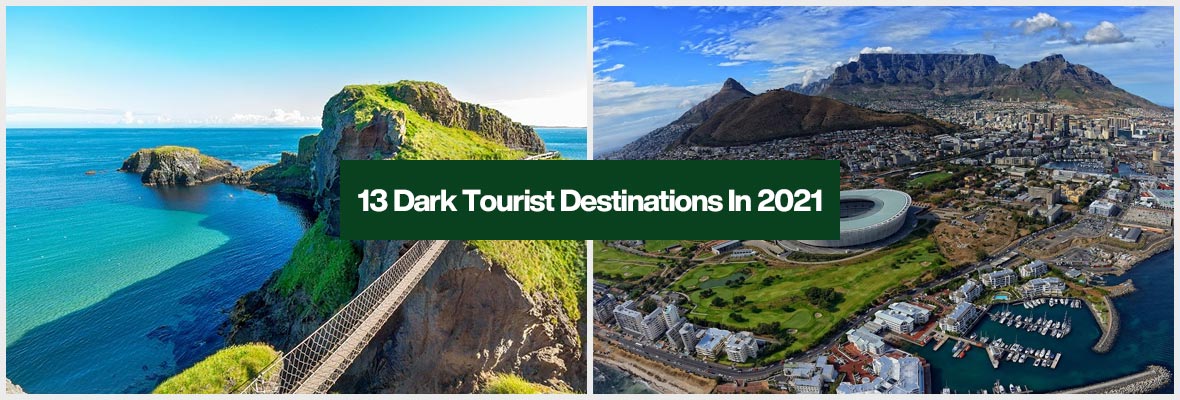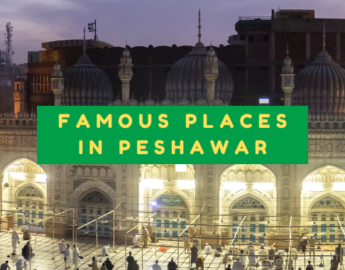Dark Tourism and Its Reality
Table of Contents
Most of us are at least some unknown tourists (even if they don’t know it). It is not as weird, suspicious, or weird as it may appear at first glance or in some media reports.
First of all, the “darkness” here is not literal but figurative, just like the “dark chapter of history.” These dark sides of history and human nature are really interesting. Therefore, it also promotes the tourism industry.
Ask yourself this question: Have you ever visited or considered visiting museums and war memorials, such as the Atomic Bomb Dome and Peace Park/Museum in Hiroshima, Japan? When visiting the French capital, would you consider visiting the famous Catacombs of Paris or the Cemetery of Father Lachaise? Or trying to find traces of the Berlin Wall while visiting the German capital? Or look at the 9/11 memorial at Ground Zero when you are in New York?
If your answer to any of these questions is “yes” or “maybe,” then even if you don’t know it yet, you are a dark tourist. As far as the 9/11 Memorial is concerned, you will meet many good friends: it receives about 5 million visitors yearly, making it probably the most visited dark place in the world today. But not all dark tourist destinations are very popular. Some may be off the beaten track and little known.
13 Dark Tourist Destinations
What about death, destruction, and disaster that attract tourists in droves?
Dark tourism is nothing new. You may have heard of the common dark tourist destinations in the world: Chernobyl, Auschwitz-Birkenau, Hiroshima, and the 9/11 Memorial.
Thanks to the Netflix series “Dark Travel,” many other dark travel hotspots are becoming increasingly popular.
But wait, there is more! After searching the dark depths of the Internet, we have compiled a list of other dark tourist destinations you may not know.
1. Northern Ireland
Let’s start with Northern Ireland. It is the most popular tourist destination on the list. But in the dark period of “trouble”, some restricted areas in Northern Ireland were not included in any travel itinerary.
Today, taking part in the black taxi political tour in West Belfast is one of the most popular dark tourism activities. You can see the political murals and monuments around the Peace Line that still separate the Catholic and Protestant communities. This includes visiting historical sites of riots, assassinations, and bombings. Despite this dark chapter of history, it is still worthwhile to explore Northern Ireland and revisit its days of yore.
If that’s not enough, you can visit Bogside in Derry/Londonderry. This is the birthplace of “trouble” and the birthplace of “Bloody Sunday,” a large-scale protest that ended with the shooting of 14 unarmed people by British troops. The Free Derry Museum (also known as the “Bloody Sunday Museum”) is a must-have for anyone interested in “trouble.” Finally, no dark tourist will miss the opportunity to visit the notorious Titanic construction site. The Titanic area is located on Queen’s Island in Belfast and is the city’s largest tourist attraction.
2. South Africa
South Africa’s tourism industry is mainly concerned with wildlife and nature. But since the end of apartheid, black tourists have become more and more interested in the oppression and struggle of this era.
Robben Island Prison in Cape Town is the number one dark tourist attraction. This is a heavily guarded prison and Nelson Mandela spent most of his 27 years in prison. Now listed as a World Heritage Site by UNESCO, the tour of the facility is led by a former prisoner. The Sixth District Museum in Cape Town, which commemorates a multicultural area. Also, declared as white by the apartheid government only in 1966.
During apartheid, Johannesburg was a troublesome hot spot because most of the black population was forcibly moved from the city center and exploited in the mining industry. As a result, there are many darker attractions, including the Apartheid Museum, Lwandle Immigration Labor Museum, Constitution Hill, Soweto, and Mandela’s House.
3. Agdam (Azerbaijan)
In 1993, the city of Agdam was completely abandoned by its population of approximately 100,000 after being invaded by the Armenian army during the Nagorno-Karabakh War. Today, it is still one of the world’s largest ghost towns – rows of ruins extend to the horizon.
Technically, you cannot visit Agdam because it is located in a “buffer” controlled by the Armenians. But this will only make Agdam more attractive to the hardcore dark tourists. The main attraction is the mosque of Medina, which is still relatively intact and offers a magnificent view of the declining city.
4. North Korea
no doubt. North Korea has a dark reputation. Although there are not many dark, formal tourist attractions, there are also many weird people. First, you cannot travel alone. They are all carefully controlled publicity journeys. This is what dark tourism experts call “personal cult” tourism.
Do you want more evidence? Visit the Sun Shrine in Komsusan Palace. Here, you can see the well-preserved remains of former leaders Kim Il Sung (Great Leader) and Kim Jong Il (Respected Leader) lying in their country with their favorite possessions.
Although difficult to enter (and almost impossible to obtain through travel insurance), North Korea is a favorite of dark-skinned tourists.
5. Montserrat (Eastern Caribbean)
Montserrat is located in the eastern part of the Caribbean Sea and is an island known as modern Pompeii. After the eruption of Mount Soufriere in 1995, most of the island’s southern half was buried. Nineteen people were killed and the city of Plymouth was abandoned. The population of the island has decreased from approximately 10,000 to 1,200.
The volcano is still active, but no major eruption has occurred since 2010. Although the desolate areas in the south are restricted, dark tourists and natural disaster lovers may arrive during periods of low volcanic activity.
6. Rwanda
The genocide in Rwanda killed as many as 1 million people in 1994 and was the largest and most brutal mass slaughter in modern history. The motive of the genocide was racism against the Tutsi and was carried out by the Hutu-led government, the Interahamwe, and the Impuzamugambi militias. It ended with the defeat of government forces by the Rwandan Patriotic Front.
Although Western countries largely ignored it at the time, Rwanda attached great importance to remembrance and remembrance. There are two public holidays for mourning and denying or reviewing that genocide is a criminal offense.
Although Rwanda has six main memorial sites, the Murambi and Niama Genocide Monuments are among the darkest destinations on the planet. Visitors will see blood-stained clothes, well-preserved corpses, skulls and bones, and some of the most shocking stories of human brutality imaginable.
7. Ijen Crater (East Java)
Ijen Volcano in East Java is home to the world’s largest acidic Crater lake, 722 meters wide and 200 meters deep. The lake is famous for its turquoise flames and smoky gas. It is a bright yellow sulfur deposit called “devil’s gold,” mined by workers who endure extremely dangerous conditions with little protection and low wages.
As more tourists visit the crater, many workers hope to charge fees or cigarettes for taking pictures. Although it is said that tourists are prohibited from climbing into the crater, many people simply ignore these signs as they travel along dangerous roads and marvel at the majestic blue flames that can only be seen at night.
8. Majdanek (Poland)
This former Nazi concentration camp and death camp in Lublin, Poland, is not as famous as the major massacre sites such as Auschwitz or Dachau. Being away from major tourist routes, Majdanek only attracts about 100,000 tourists annually (compared to 1.5 million tourists in Auschwitz). However, it may be the best preserved as one of the earliest announced memorial sites.
The camp was liberated by the Soviets in the summer of 1944-about 10 months before the end of the Second World War. Therefore, the Nazis did not have time to hide evidence of atrocities committed in concentration camps. The death toll is estimated to be around 80,000.
With its watchtower, barbed wire, few visitors, and well-preserved galleries, many consider Majdanek to be the most challenging Holocaust memorial.
9. Magadan (Siberia)
Speaking of the cruel Gulag in the Stalin era, Magadan is the most famous. The area is located in eastern Siberia, too far away, and there is no need for a fence around the camp. The fugitive had no hope of fleeing the cruel wilderness.
Traveling to this part of the world is not for the faint-hearted. Even the most difficult traveler will use a professional travel agency on this trip. You will drive along the Kolyma Highway (also known as the “Bone Road”), the longest highway in the world, and visit various ghost towns and Gulags.
When it comes to dark tourism, this is a destination that combines dark communist history, decadence, and extreme isolation.
10. Bikini Atoll (Marshall Islands)
Without the nuclear option, any list of dark tourist destinations is incomplete. The Bikini Atoll in the Marshall Islands consists of 23 islands surrounding the central lagoon. Coincidentally, the United States detonated 23 nuclear devices on Bikini Atoll between 1946 and 1958.
Operation Crossroads was the first atomic explosion after two nuclear weapons tests and the bombing of Nagasaki in 1945. The radioactive fallout of the second underwater experiment, code-named “Baker”, was the world’s first nuclear disaster. Ten ships were sunk, including the battleship USS Arkansas and the aircraft carrier USS Saratoga.
Due to high levels of radioactive contamination, the indigenous people have been displaced. Today, Bikini Atoll offers some of the best shipwreck diving spots in the world. However, visitors are only allowed to enter if they stay on a self-sufficient boat and obtain the necessary approvals.
11. Chile
For the dark tourist, there are many monuments and attractions to explore. In Santiago, Chile, the most famous attractions are the Museum of Memory and Human Rights, the famous Grimaldi Detention Center, and Lenders 38’s secret torture house.
If you are a fan of the horror atmosphere, you can find many ghost towns that make nitrates all over Chile. But the most notable is Chacabuco, which was also a concentration camp under Pinochet.
12. Falkland Islands
In April 1982, Argentina invaded British territory in the Falkland Islands in an attempt to claim sovereignty. The conflict lasted for 74 days, and the islands returned to British control after Argentina surrendered. Approximately 900 people were killed.
Battlefield tourism is the third most popular tourism category in the Falkland Islands. Visitors can visit various war relics, memorials, minefields, museums, and crash sites scattered throughout the landscape. The islands’ remote location and ruins attract tourists seeking to experience remote locations.
Travel to the Falkland Islands requires a flight from Chile, which also offers a variety of mysterious tourist attractions (see Article 11 above).
13. West Virginia
What about West Virginia? This place has three mysterious tourist attractions. The first was the West Virginia Penitentiary in Moundsville, a Gothic prison that operated from 1876 to 1995. In addition to being known for violence, riots, breakouts, and executions, it is also classified as one of the haunted prisons by fans of the supernatural prison in the U.S
The Trans Allegheny Lunatic Asylum is another popular destination for ghost hunters and dark medical tourists. This Neo-Gothic building has appeared in many supernatural TV shows. There are guided historical tours (including medical and restricted museums) and supernatural tours at night.
Final Thoughts
Finally, your trip to West Virginia will not be complete without a visit to the Greenbrier Nuclear Depot. Secretly built under the Greenbrier Resort during the renovation from 1959 to 1961, this huge bunker was designed to serve as the seat of Congress in the event of a nuclear catastrophe. However, the US government did not recognize its existence until 1992.
Are you a dark tourist?
So, you have 13 dark destinations to consider for your next adventure. With the increasing popularity of dark tourism, some people may wonder whether it is ethical to visit these places. But for many of the places mentioned above, archaeology and tourism have helped disaster-stricken communities recover and grow. Is it better to have a first-hand understanding of the dark history of the past than simply forgetting it or worse than repeating it?






